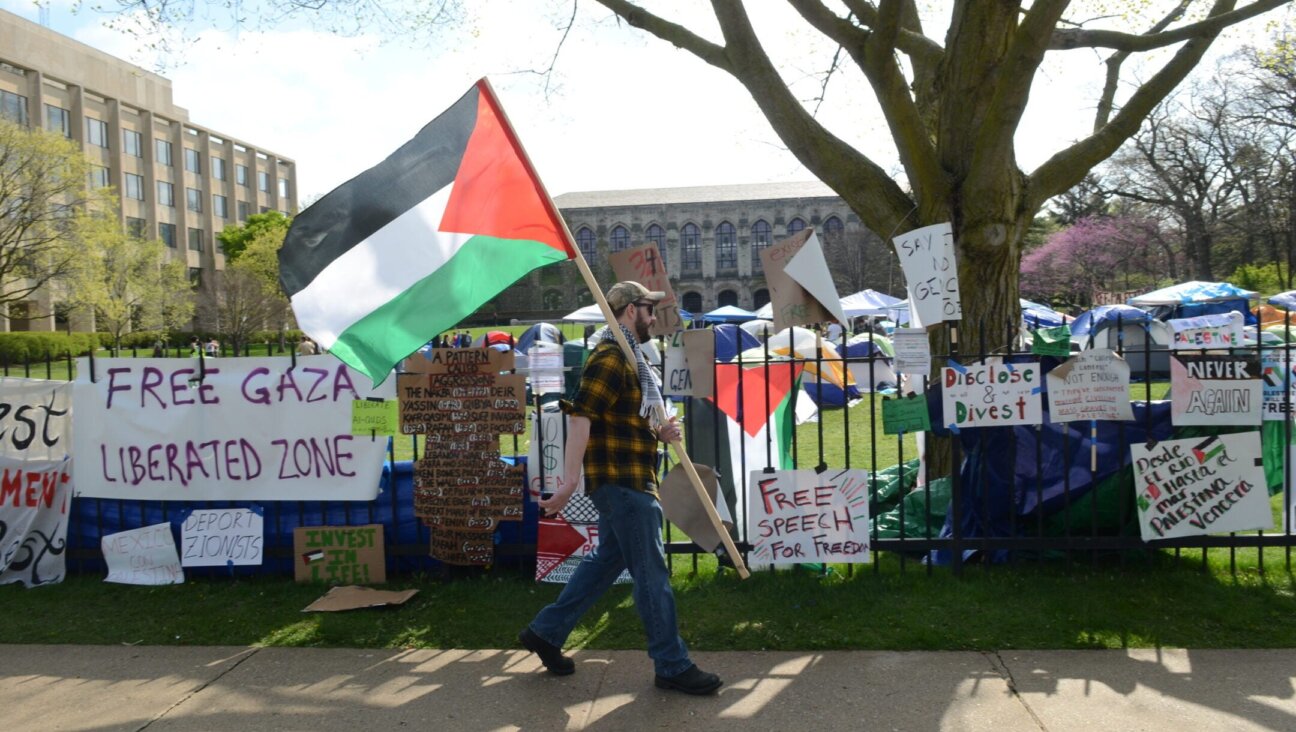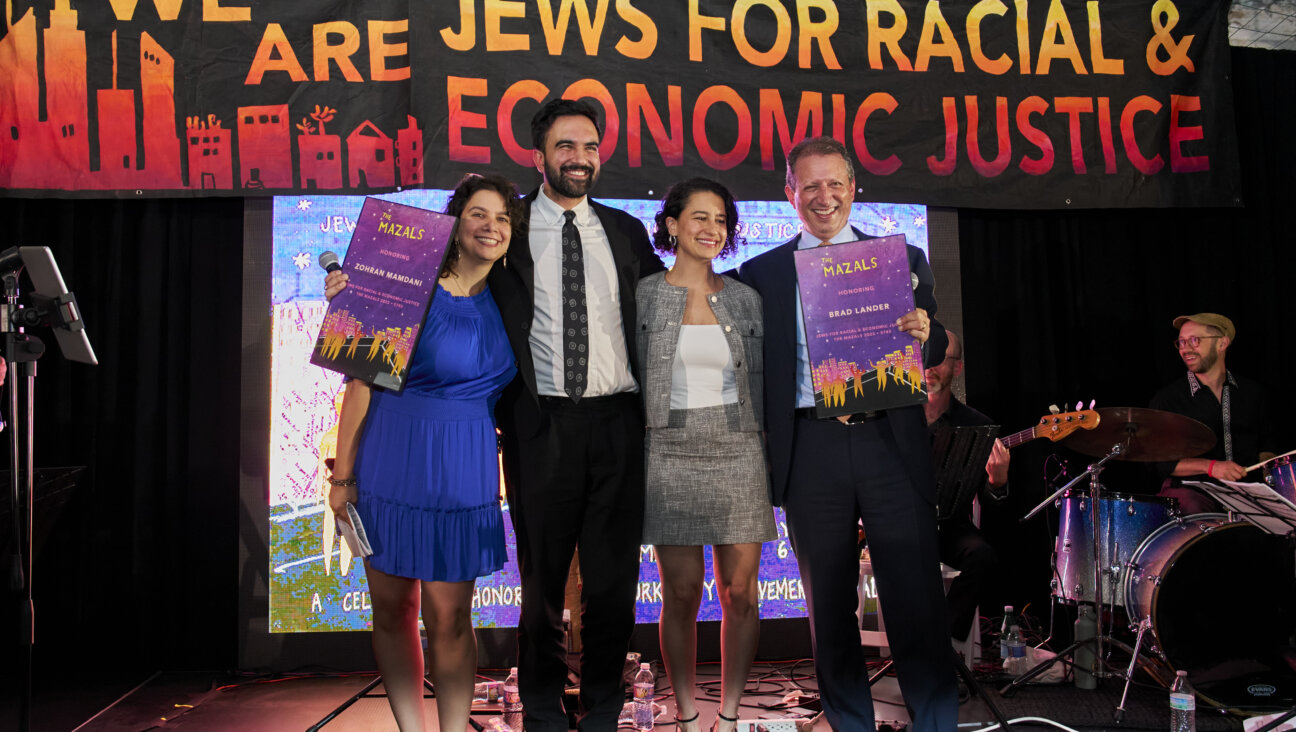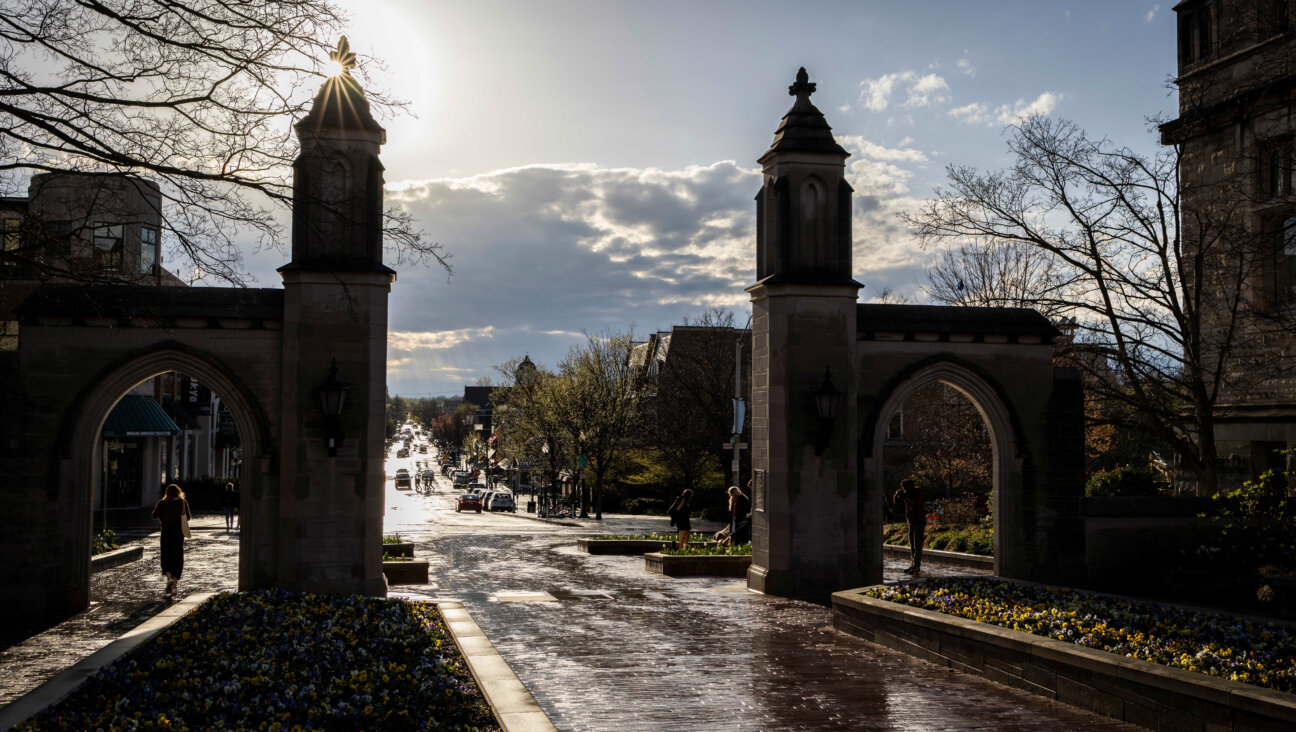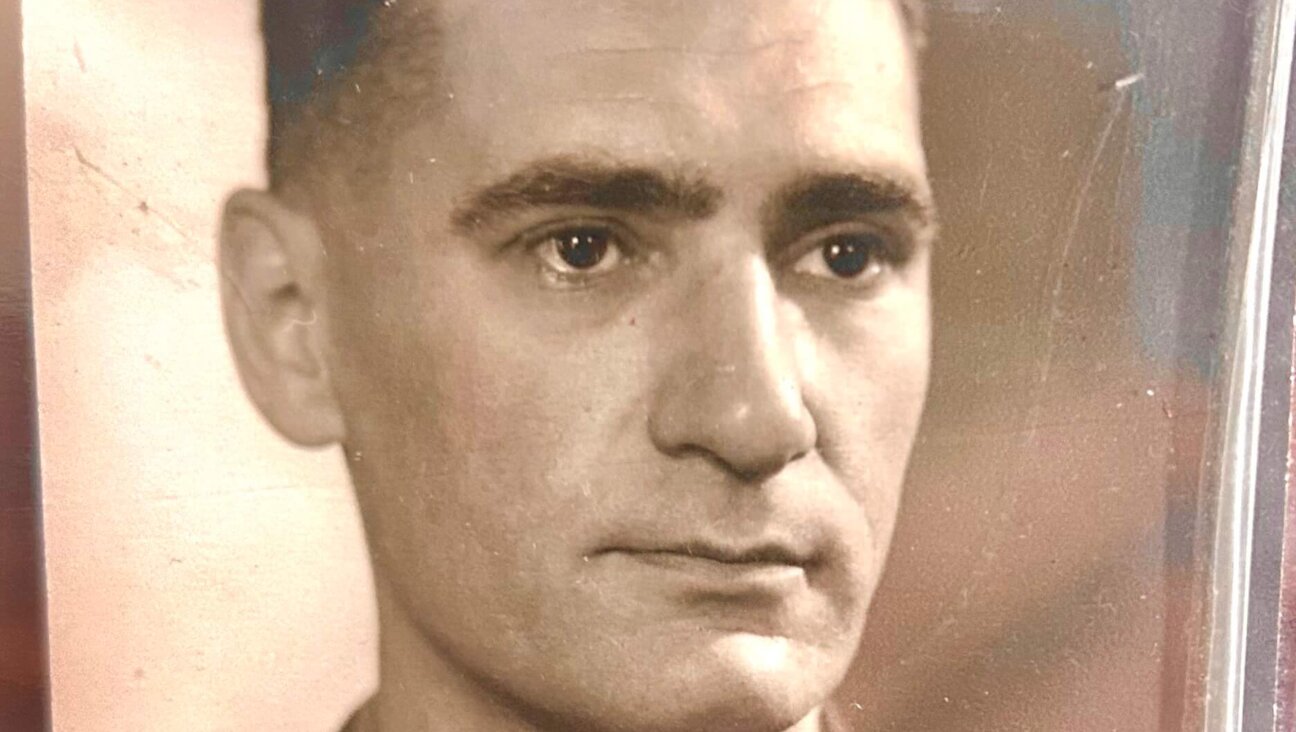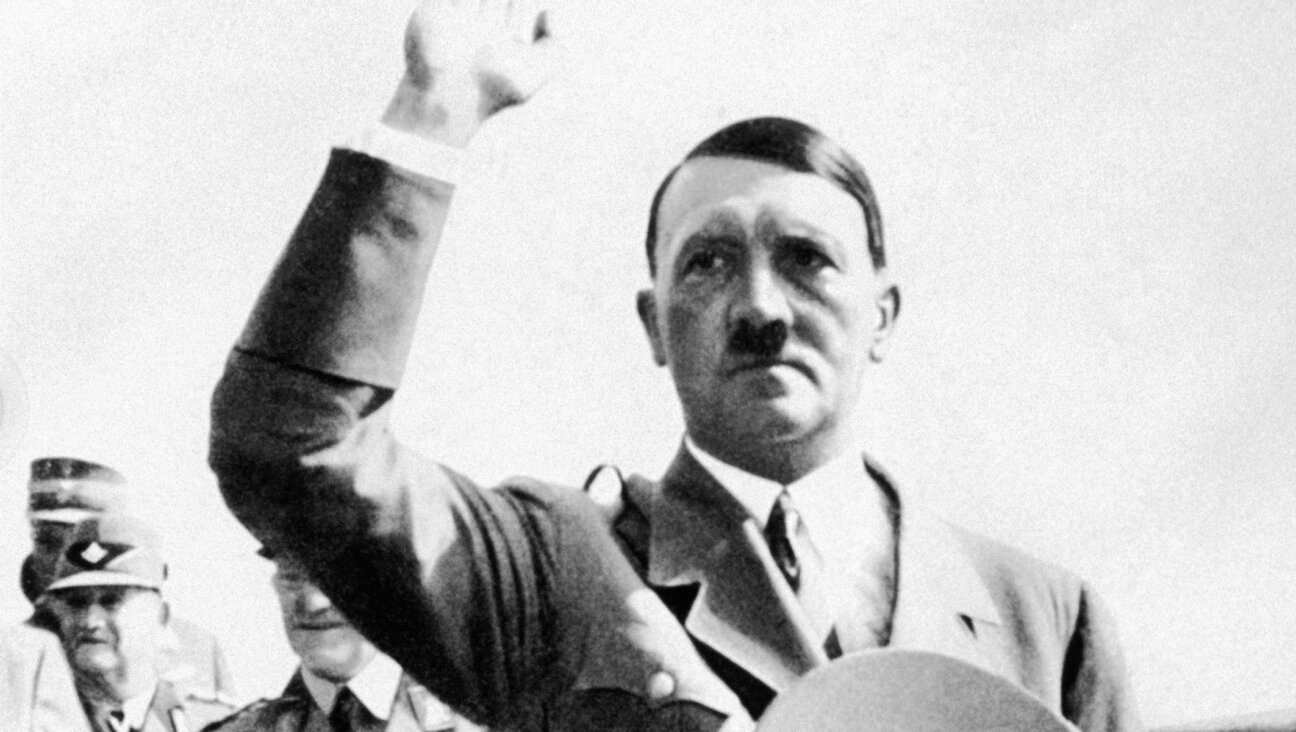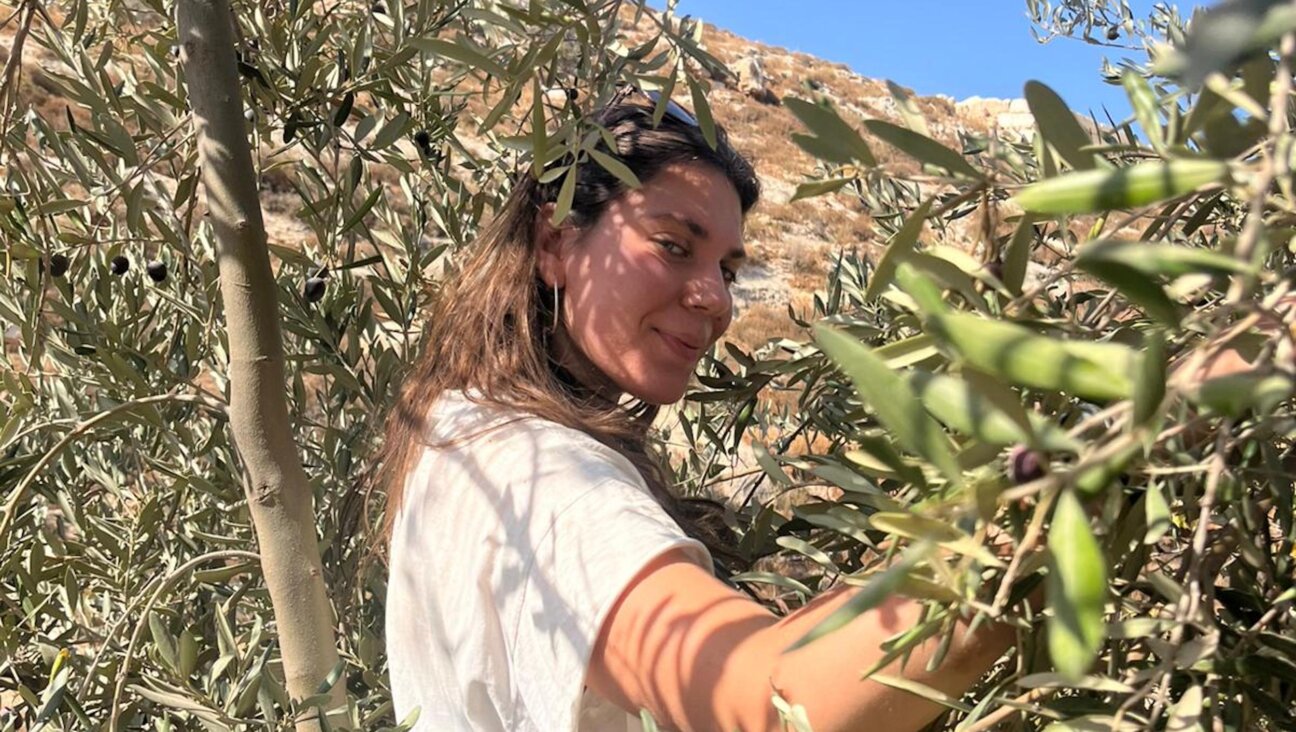I’m the archivist of the Tree of Life shooting. This is how I ‘process’ it.

Mourners visit the memorial outside the Tree of Life Synagogue on October 31, 2018 in Pittsburgh, Pennsylvania. Eleven people were killed in a mass shooting at the Tree of Life Congregation in Pittsburgh’s Squirrel Hill neighborhood on October 27 Image by Getty Images
The attack on October 27, 2018, lasted 83 minutes from the moment the gunman entered the synagogue until the moment the police apprehended him. In the 18 months since that Saturday morning, I have collected 189 boxes of things documenting the impact of those 83 minutes on the Jewish population of Western Pennsylvania. “Things” in this case means things you can touch—flyers, programs, signs, speeches, sermons, posters, and the many letters and gifts sent as gestures of consolation.
They currently occupy a section of metal shelves in a back corner of the archive where I work, down one long row and halfway down the next. Seeing all these things together in one place is overwhelming. They are the manifestation of a collective emotional response to one tragedy. In the archives of other communities are the responses to other tragedies. If you multiply our shelves by those tragedies, and imagine standing before all of it, you can appreciate the enduring relevance of the Talmudic dictum by Abba Binyamin: “If the eye were given permission to see them, no creature would be able to withstand the demons surrounding us” (Tractate Berakhot 6a ). Grief is a class of demon. If we could see it, its ubiquity would be unbearable.

A visitor lays a flower on the makeshift memorial Saturday morning in front of the Tree of Life Synagogue on November 3, 2018 in Pittsburgh, Pennsylvania. Image by Getty Images
I was briefly given permission the morning after the attack, as I drove into Squirrel Hill. I had gone to sleep heartbroken and woken a few hours later in a state I had never experienced before and could not diagnose. My limbs were limp as thread. A patch of numbness buzzed behind each of my ears, and at the pulse points in my wrists. I sobbed in the shower until I was gasping for air, and again in the car, listening to the news. Over and over in those initial weeks, I fell apart anytime my friends were on the news, being interviewed or, worse, standing in the background of a photograph. The news is usually so distant. The people being interviewed are strangers, and the people in the background are anonymous.
The morning was damp and gray. I took Beechwood Boulevard into Squirrel Hill to avoid the police barricades along Shady Avenue blocking the approach to the crime scene. Beechwood and Shady run parallel for several blocks, and at each intersection I glanced to my right, not to rubberneck but to reestablish my personal connection to a street corner I have passed a thousand times without consequence. Peering down one of those side streets, I saw the neon streak of an ambulance zipping through the intersection, up Shady, toward the Synagogue.
All at once I was overcome. My head started swimming, and my skin broke out in dull dime-sized tingles. I’m going to pass out, I thought. I pulled the car over, dropped my face into my hands, and sobbed while the sensation coursed through my body. It expanded across my midsection, spread down my arms and legs, and spilled into my fingers and toes. After about a minute, it subsided. The way it passed unfiltered through my body reminded me of an earthquake I had experienced in Alaska, how the tremor had slipped along its fault line like an invisible train barreling down invisible tracks, the force gradually strengthening as it approached, briefly overwhelming on arrival, and fading as it departed. As I sat there in the car that morning, wondering what had just happened, I had an epiphany, almost too big to handle. It was this: Someone is always feeling what I just felt. Grief is always striking somewhere. And just as the reverberations diminish in one place, grief strikes anew somewhere else. Grief is one of the constant undertones of human existence. Until that morning, I had been largely unaware.
All over the world, thousands of people were also overcome by the attack and were subsequently compelled to channel their feelings into flyers, programs, signs, speeches, sermons, posters, letters, and gifts.
They sent those things to people throughout the region. In time, as the aftershocks lessened, those people lent those things to me. Then the processing began.
Processing is a sequence of tasks intended to make records easier to use. An archivist appraises the records, transfers them to acid-free folders and boxes, arranges them, describes them, and eventually catalogs them, at which point they become available to any researcher who wants to see them for any reason. A well-processed collection is like a city with good roads. It makes getting anywhere easier, even if you don’t quite know where to go or how to get there.
Outside of the archival world, “processing” has also become a common term for the psychological task of reckoning with an emotionally intense experience. It involves thinking through the experience until you can live with the feelings it provokes. You turn everything over in your head. You crouch down to examine the details. You step back to view it from a distance. You talk about it. You dream about it. You search for connections in the experiences of other people, or in art.
You try to find a place for it within your general understanding of how the world works. Only that’s not it—not exactly—because thinking through an experience can change your understanding of how the world works. Emotional processing is the interplay between a mind and its memories, each working on the other until equilibrium is restored. People call that equilibrium “coming to terms” with an event, or they call it “acceptance.” It is distinct from finding “meaning” or “purpose.” Those are what processing allows you to acquire.
Archival processing is the same activity, only with paper instead of emotions. A collection of records arrives at an archive without any definitive explanation of its reason for being. It is a code without a key. Archivists learn as much as they can about the creator of the records and about the circumstances surrounding the creation of the records. They review the records over and over in search of connections, themes, and groupings. They eventually come to understand the essential nature of the records—why they were made, and what they do. At that point they can write a finding aid, which is an abstract, a table of contents, and an index, all in one. It describes the contents and the context of a collection in simple language, allowing researchers to navigate the records. A tenacious researcher can muscle through an unprocessed collection of records and find what they want to find, just as a tenacious person can charge through life without processing any anger or pain. But in both cases, processing is based on the premise that making sense of complexity gives you a better chance of benefiting from it.
An important step in archival processing is measuring a collection. The 189 boxes of things stacked neatly on the shelves at the Jewish archives are impressive to behold because they occupy so much physical space. But they are insignificant compared to the things that take up almost no physical space at all. We have collected 18.45 gigabytes of digital photographs, flyers, videos, and audio recordings, and an additional 146.9 gigabytes of online materials: websites, news articles, social media posts. Beyond that are other records, things we know exist and hope to someday collect, things too sensitive to be entrusted into our care just yet. Beyond the records we know about are the records we don’t know about, but would want if we did. (Imagine, in a drawer somewhere, an eloquent diary chronicling the aftermath.) And each of these categories—the physical and the digital, the known and the unknown—is constantly accumulating things, day by day by day, as the reverberations of the attack continue to shake the ground beneath our feet.
For survivors of the attack, for families of the victims, for the three attacked congregations, for the Jewish community in this region, and for its allies around the city and across the world, each new day expands the experience of being so close to such horror. And that expansion generates things. Mourners send gifts of consolation. Writers tell stories. Artists make art. Activists act. Lawyers write briefs. Each similar attack somewhere else generates comparisons to the attack in Pittsburgh, and often a response from groups in Pittsburgh, which in turn generates more flyers and more programs and more posters and more speeches.
The Jewish calendar continually encourages reflection—the week of shiva, the month of shloshim, the first Hanukkah and the first Purim with their twin archetypes of antisemitism, the first Passover with its first somber yizkor to recall the dead, the first Yom Hashoah connecting our attack to the worst attack perpetrated against our people, the first Tisha b’Av with its echoes of Jewish tragedy throughout the ages, the first High Holidays, the first unveiling of grave markers, the first yahrzeit of the attack on the Gregorian calendar and on the Hebrew calendar, and then the second Hanukkah, and the second Purim, and so on, until daily life itself becomes a response to the attack, as the ongoing act of recovery silently infuses every sermon, every lecture, every exhibit, every article, every flyer, every conversation, without ever needing to make the reference explicit. A community produces a lot of documentation as it collectively processes its pain. Try to imagine a room large enough to contain all the things that would not exist if those eighty-three minutes had not occurred. That is the impossible ideal the archive is chasing.
The first item added to this collection was a program. It was handed out at a large vigil at Soldiers and Sailors Memorial Hall, the day after the attack. It is a single sheet of paper, with a statement on one side and a song sheet on the other, including the lyrics to Irving Berlin’s “God Bless America.” Over the months that followed, I rushed to vigils, classes, lectures, conversations, and symposia, collecting whatever documentation I could find. Having a defined role initially eased my private sorrow. Being out in the world—observing, listening, collecting—opened my heart wide. The emotions of any given moment crashed over me with full force, but when they receded, they seemed to leave no residue. It thought I had found instant processing.
But it was nothing more than experiencing too much too quickly, and inevitably it caught up with me. The city limped back to its routines, and I was still picking through the remnants of other people’s grief. The emotions kept crashing over me and crashing over me, and after they had receded, bits clung to me for days. A few months after the attack, I began recording oral histories. The interviews were personal and intense, each revealing a hidden world of pain. Hearing other people talk through their grief was enlightening. But it was also exhausting. Every oral history started with the same question: “What were you doing on the morning of October 27, 2018?” I returned to that morning again and again and again, living those awful hours alongside one person and then alongside another person, and another. I eventually lost the desire to record interviews. I found I was increasingly unable to stare into the eyes of someone articulating pain…
A psychiatrist told me, “Remember, it’s not your pain.” I believe him, and yet it has been so hard to yank my heart away from the pain of other people. On quiet days, I still duck into the archive, pull a box from the shelves, and sit on the cold tile floor, reading through the letters of consolation. Every time I do, I discover some new facet of the collective grief. Some word choice makes everything real and immediate again. Pressure rises up my neck and floods my cheeks, a minor recurrence of the incapacitation I first felt in the car. The inner life of other people, set down on paper, is so much more sharply defined than the muddle I feel when I reckon with my own response to the attack. Their pain has become an artifact, and mine is just pain…
The work remains perpetually ongoing. New demands are always pushing it aside. But whenever I am able to turn my attention to it, it provides me the only sustained comfort I have felt since the attack aside from the idyll of daily prayer. I have no special insight into why this attack happened, or why it happened here. I don’t know what would have prevented it from happening here or what would prevent it from happening again somewhere else. I don’t understand the depth of my sorrow or the vast sorrow of others. All I know is this: there are 189 boxes of things stacked neatly on our shelves, plus 18.45 gigabytes of digital materials and another 146.9 gigabytes of online materials stored on servers and hard drives. In due time, with persistence, I can know just the tiniest bit more. I can know each thing individually. I will be able to describe it, and I will be able to situate it among all the other things in the archive, so that nothing is ever lost or overlooked, so that others can someday make meaning from it all.
“Any act of description is, to some extent, an act of praise,” John Updike once said, defending his verbosity, “so that even when the event is unpleasant or horrifying or spiritually stunning, the very attempt to describe it is, in some way, part of that Old Testament injunction to give praise.”Since my epiphany in the car that gray October morning, I have spent some part of every day trying to reckon with the murkiness of my grief by describing the grief of other people, as it exists in the thousands of things they created. But every day adds to this collection, contributing to the ongoing story of recovery, and so I will never be any further along than when I started. It will consume as much of my life as I choose to give to it, and then it will consume just as much of the life of whoever follows me, and whoever follows that person, as well.
The work is not therapy, and it cannot take the place of a private reckoning. It is simply an act of praise, a way to dignify a communal experience. Like any act of praise, it is uplifting, but only temporarily. Praise redirects the tremendous energy given to self-regard. Anytime I look outside myself, and I marvel at what I see, I always feel a little better. When I return to myself and to my tired thoughts, I am changed. And until that feeling wears off, I can breathe again.
Eric Lidji is the director of the Rauh Jewish Archives at the Senator John Heinz History Center. This is adapted from a longer essay called, ‘Processing,’ which appears in Bound in the Bond of Life: Pittsburgh Writers Reflect on the Tree of Life Tragedy, edited by Beth Kisileff and Eric Lidji(University of Pittsburgh Press, 2020).

